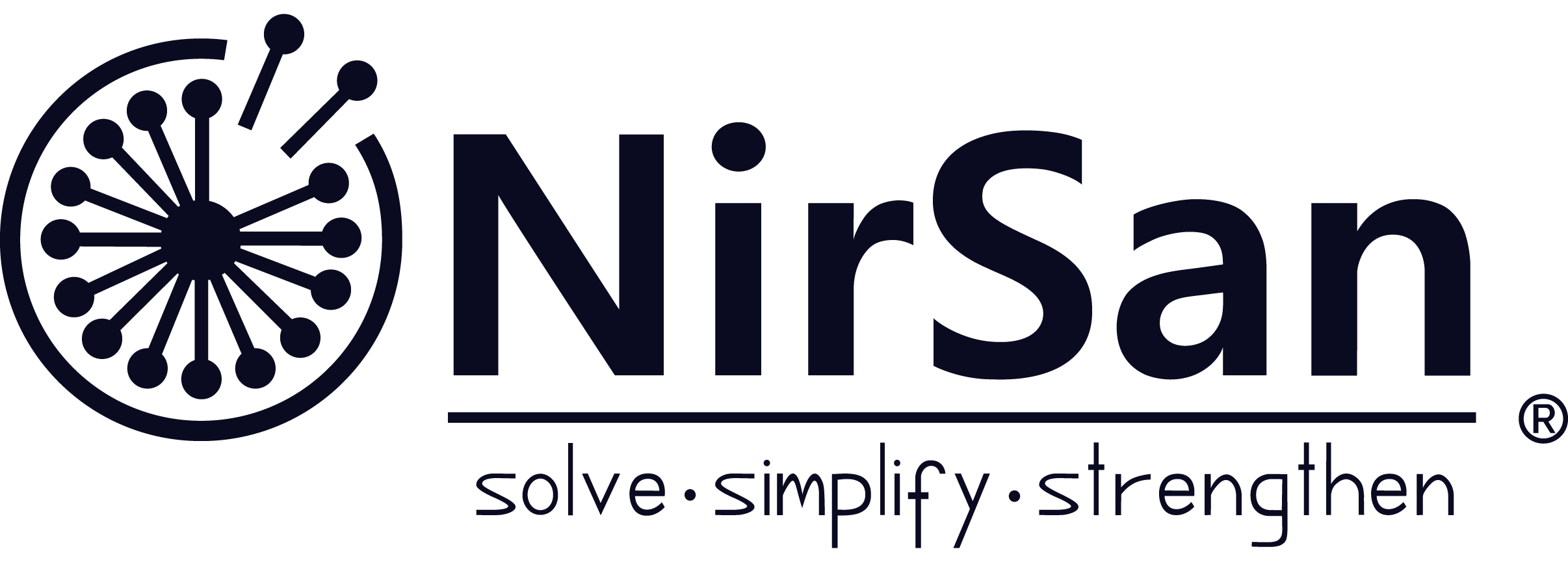
What is EMQUIP®?

Quality of decision making underpins the smoothness of operations and the excellence in performance of an enterprise. However, while varied research has been conducted on the topic, the most applied of these theories have not gone beyond the realm of being mechanistic. The focus in most situations has been singularly on who performs the different roles inherent within the different stages of decision making. In contrast, EMQUIP® is designed around an understanding of the substantive ingredients of the decision making task. EMQUIP® provides you with an in-depth evaluation of the quality of decision making in your organisation. It conducts this assessment for different categories of decisions, and disaggregates overall quality into the quality of constituent activities that are inherent in decision making.
Decision making quality underlies operational smoothness and performance excellence. While various theories abound, the most applied of these have not gone beyond being mechanistic. Focus has remained on who performs different roles during the different stages of decision making. In contrast, EMQUIP® is designed around the substantive ingredients of the decision making task. EMQUIP® provides an in-depth assessment of decision making quality for different decision categories, and disaggregates this assessment into the evaluation of the constituent activities of decision making.
Decision making quality underlies operational smoothness and performance excellence. While various theories abound, the most applied of these have not gone beyond being mechanistic. Focus has remained on who performs different roles during the different stages of decision making. In contrast, EMQUIP® is designed around the substantive ingredients of the decision making task. EMQUIP® provides an in-depth assessment of decision making quality for different decision categories, and disaggregates this assessment into the evaluation of the constituent activities of decision making.
Decision making quality underlies operational smoothness and performance excellence. While various theories abound, the most applied of these have not gone beyond being mechanistic. Focus has remained on who performs different roles during the different stages of decision making. In contrast, EMQUIP® is designed around the substantive ingredients of the decision making task. EMQUIP® provides an in-depth assessment of decision making quality for different decision categories, and disaggregates this assessment into the evaluation of the constituent activities of decision making.
Why worry about "decision making quality"? Why get EMQUIP®?
The thinking on what constitutes high quality decision making has witnessed gross simplification. Prevalent approaches have robbed the topic of depth and substance, and turned it into a caricature that depicts decision making as a linear progression of such mechanically described tasks as ‘recommending’, ‘approving’, ‘supporting’, ‘consulting’ and ‘informing’. It pays scant attention to such substantive matters as the decision goal setting, research and problem solving, collaborating, aligning, and communicating and contextualising. Get EMQUIP® for your organisation to rid decision making of its superficial and caricatured portrayal, and to strengthen its constituent elements. With the resultant impact of enhancing performance and operational efficacy, while motivating the individual employee.
What constitutes high quality decision making has often been grossly simplified. Prevalent approaches lack depth, and have turned decision making into a caricature that depicts it as a linear progression of mechanically described tasks as ‘recommending’, ‘approving’, ‘supporting’, ‘consulting’ and ‘informing’. These approaches pay scant attention to the substantive matters of setting decision goals, researching and problem solving, collaborating, aligning, and communicating and contextualising. Get EMQUIP® to fundamentally strengthen decision making by strengthening its constituent elements.
What constitutes high quality decision making has often been grossly simplified. Prevalent approaches lack depth, and have turned decision making into a caricature that depicts it as a linear progression of mechanically described tasks as ‘recommending’, ‘approving’, ‘supporting’, ‘consulting’ and ‘informing’. These approaches pay scant attention to the substantive matters of setting decision goals, researching and problem solving, collaborating, aligning, and communicating and contextualising. Get EMQUIP® to fundamentally strengthen decision making by strengthening its constituent elements.
What constitutes high quality decision making has often been grossly simplified. Prevalent approaches lack depth, and have turned decision making into a caricature that depicts it as a linear progression of mechanically described tasks as ‘recommending’, ‘approving’, ‘supporting’, ‘consulting’ and ‘informing’. These approaches pay scant attention to the substantive matters of setting decision goals, researching and problem solving, collaborating, aligning, and communicating and contextualising. Get EMQUIP® to fundamentally strengthen decision making by strengthening its constituent elements.

Who will benefit from EMQUIP®?

Decisions makers at all levels and in all domains of the organisation will benefit from EMQUIP®. This will include individuals responsible for decisions in operational, strategic, commercial, marketing and people-related matters. Benefits will accrue from the deep and holistic conception of decision making, which in turn will ensure that individuals and collectives comprehend and pay real attention to matters that constitute the act of decision making. Leaders with accountability of performance units will no doubt benefit from the derivative impact of improved performance. The organisation as a whole will benefit from added depth and smoothness in its direction, operations and organisational climate. Beyond all this, EMQUIP® will have the valued impact of enhancing employee motivation through empowerment.
EMQUIP® benefits decisions makers at all levels and domains, including the operational, strategic, commercial, marketing and human resources functions. The deep and holistic conception of decision making ensures that individuals and collectives pay attention to matters that truly constitute decision making. Leaders with performance accountability benefit from the derivative impact of improved performance. The organisation benefits from smoothness in direction, operations and the organisational climate. Moreover, EMQUIP® has the valued impact of enhancing employee motivation through empowerment.
EMQUIP® benefits decisions makers at all levels and domains, including the operational, strategic, commercial, marketing and human resources functions. The deep and holistic conception of decision making ensures that individuals and collectives pay attention to matters that truly constitute decision making. Leaders with performance accountability benefit from the derivative impact of improved performance. The organisation benefits from smoothness in direction, operations and the organisational climate. Moreover, EMQUIP® has the valued impact of enhancing employee motivation through empowerment.
EMQUIP® benefits decisions makers at all levels and domains, including the operational, strategic, commercial, marketing and human resources functions. The deep and holistic conception of decision making ensures that individuals and collectives pay attention to matters that truly constitute decision making. Leaders with performance accountability benefit from the derivative impact of improved performance. The organisation benefits from smoothness in direction, operations and the organisational climate. Moreover, EMQUIP® has the valued impact of enhancing employee motivation through empowerment.
Where (in which settings) should you get EMQUIP®?
Get EMQUIP® for your organisation if you are faced with any of the following four concerns. First is the ‘concern of linearity’. You feel that your organisation defines decision making in linear fashion, as a progression of steps, and somewhat naively ignores the inherent dynamics of feedback and iteration. Second is the ‘concern of superficiality’. You believe that the task of decision making is unable to go deeper than a superficial level of tactical machinations. Third is the ‘concern of isolation’. You notice that decision making is devoid of collective and coordinated efforts, in areas such as problem solving and alignment, and has become the reserve of isolated individuals. Fourth is the ‘concern of capability’. You are convinced that organisation actors lag in the capacities needed for the making of sound decisions.
Get EMQUIP® when faced with any of the following four concerns. First, ‘concern of linearity’. Your organisation defines decision making in linear fashion, as a progression of steps, ignoring the dynamics of feedback and iteration. Second, ‘concern of superficiality’. Decision making is unable to go deeper than a superficial level comprising tactical machinations. Third, ‘concern of isolation’. Decision making is devoid of collective and coordinated efforts, and has become the reserve of specific individuals. Fourth, ‘concern of capability’. Organisation actors lag in the capacities that are needed for sound decision making.
Get EMQUIP® when faced with any of the following four concerns. First, ‘concern of linearity’. Your organisation defines decision making in linear fashion, as a progression of steps, ignoring the dynamics of feedback and iteration. Second, ‘concern of superficiality’. Decision making is unable to go deeper than a superficial level comprising tactical machinations. Third, ‘concern of isolation’. Decision making is devoid of collective and coordinated efforts, and has become the reserve of specific individuals. Fourth, ‘concern of capability’. Organisation actors lag in the capacities that are needed for sound decision making.
Get EMQUIP® when faced with any of the following four concerns. First, ‘concern of linearity’. Your organisation defines decision making in linear fashion, as a progression of steps, ignoring the dynamics of feedback and iteration. Second, ‘concern of superficiality’. Decision making is unable to go deeper than a superficial level comprising tactical machinations. Third, ‘concern of isolation’. Decision making is devoid of collective and coordinated efforts, and has become the reserve of specific individuals. Fourth, ‘concern of capability’. Organisation actors lag in the capacities that are needed for sound decision making.

How does EMQUIP® work?

The design of EMQUIP® is based on its proprietary five-part framework called the ‘DIAMOND’ decision making framework. With EMQUIP®, you will undergo the four stages of ‘installation’, ‘engagement’, ‘analysis’ and ‘dissemination’ over a period of eight weeks. To install EMQUIP®, you will outline the concerns related to and the indicators of subpar decision making; establish the scope of research by nominating decision making units or categories of decisions as the subjects; and nominate research respondents. EMQUIP® will then engage with the respondents and assess relevant organisation records in order to gather inputs. Analysis will be grounded in the product’s proprietary framework. The final research output of EMQUIP® will include descriptive and narrative accounts, supplemented by quantitative analysis.
EMQUIP® is designed based on our proprietary framework called the ‘DIAMOND’ decision making framework. The stages of ‘installation’, ‘engagement’, ‘analysis’ and ‘dissemination’ take place over eight weeks. To install, you will outline the indicators of subpar decision making, establish scope by selecting decision making units and decision categories, and nominate research respondents. EMQUIP® will then engage with the respondents and analyse data and decision making records. EMQUIP® output includes descriptive and narrative accounts, supplemented by quantitative analysis.
EMQUIP® is designed based on our proprietary framework called the ‘DIAMOND’ decision making framework. The stages of ‘installation’, ‘engagement’, ‘analysis’ and ‘dissemination’ take place over eight weeks. To install, you will outline the indicators of subpar decision making, establish scope by selecting decision making units and decision categories, and nominate research respondents. EMQUIP® will then engage with the respondents and analyse data and decision making records. EMQUIP® output includes descriptive and narrative accounts, supplemented by quantitative analysis.
EMQUIP® is designed based on our proprietary framework called the ‘DIAMOND’ decision making framework. The stages of ‘installation’, ‘engagement’, ‘analysis’ and ‘dissemination’ take place over eight weeks. To install, you will outline the indicators of subpar decision making, establish scope by selecting decision making units and decision categories, and nominate research respondents. EMQUIP® will then engage with the respondents and analyse data and decision making records. EMQUIP® output includes descriptive and narrative accounts, supplemented by quantitative analysis.
When during the operating year should you get EMQUIP®?
EMQUIP® is designed for annual as well as episodic usage. EMQUIP® requires eight weeks to go through the ‘installing’, ‘engaging’, ‘analysing’ and ‘disseminating’ phases. If you are using EMQUIP® on an annual calendar, then we recommend preferred usage during the second half of the year, for multiple reasons. First, the research outcome can be incorporated at the beginning of the next year, particularly when decisions of major import are taken. Specifically, the output can be folded into processes such as resource allocation and budgeting. Second, the research will benefit from inputs that are based on decisions recently taken. While using EMQUIP® episodically or for the first time, we do not recommend a preferred timing. Get EMQUIP® when you encounter any of the four concerns outlined earlier.
EMQUIP® is designed for annual as well as episodic usage. When using EMQUIP® annually, we recommend usage during the second half of the year, for two reasons. First, the research outcome can be incorporated into the operations of the upcoming year, when decisions of major import are taken. The output can be folded into processes such as resource allocation and budgeting. Second, the research will be able to draw on decisions recently taken. While using EMQUIP® episodically, we do not recommend a specific time. Get EMQUIP® as and when you encounter any of the four concerns outlined earlier.
EMQUIP® is designed for annual as well as episodic usage. When using EMQUIP® annually, we recommend usage during the second half of the year, for two reasons. First, the research outcome can be incorporated into the operations of the upcoming year, when decisions of major import are taken. The output can be folded into processes such as resource allocation and budgeting. Second, the research will be able to draw on decisions recently taken. While using EMQUIP® episodically, we do not recommend a specific time. Get EMQUIP® as and when you encounter any of the four concerns outlined earlier.
EMQUIP® is designed for annual as well as episodic usage. When using EMQUIP® annually, we recommend usage during the second half of the year, for two reasons. First, the research outcome can be incorporated into the operations of the upcoming year, when decisions of major import are taken. The output can be folded into processes such as resource allocation and budgeting. Second, the research will be able to draw on decisions recently taken. While using EMQUIP® episodically, we do not recommend a specific time. Get EMQUIP® as and when you encounter any of the four concerns outlined earlier.

© Copyright 2019  All rights reserved.
All rights reserved.
© Copyright 2019  All rights reserved.
All rights reserved.
© Copyright 2019  All rights reserved.
All rights reserved.
© Copyright 2019  All rights reserved.
All rights reserved.
